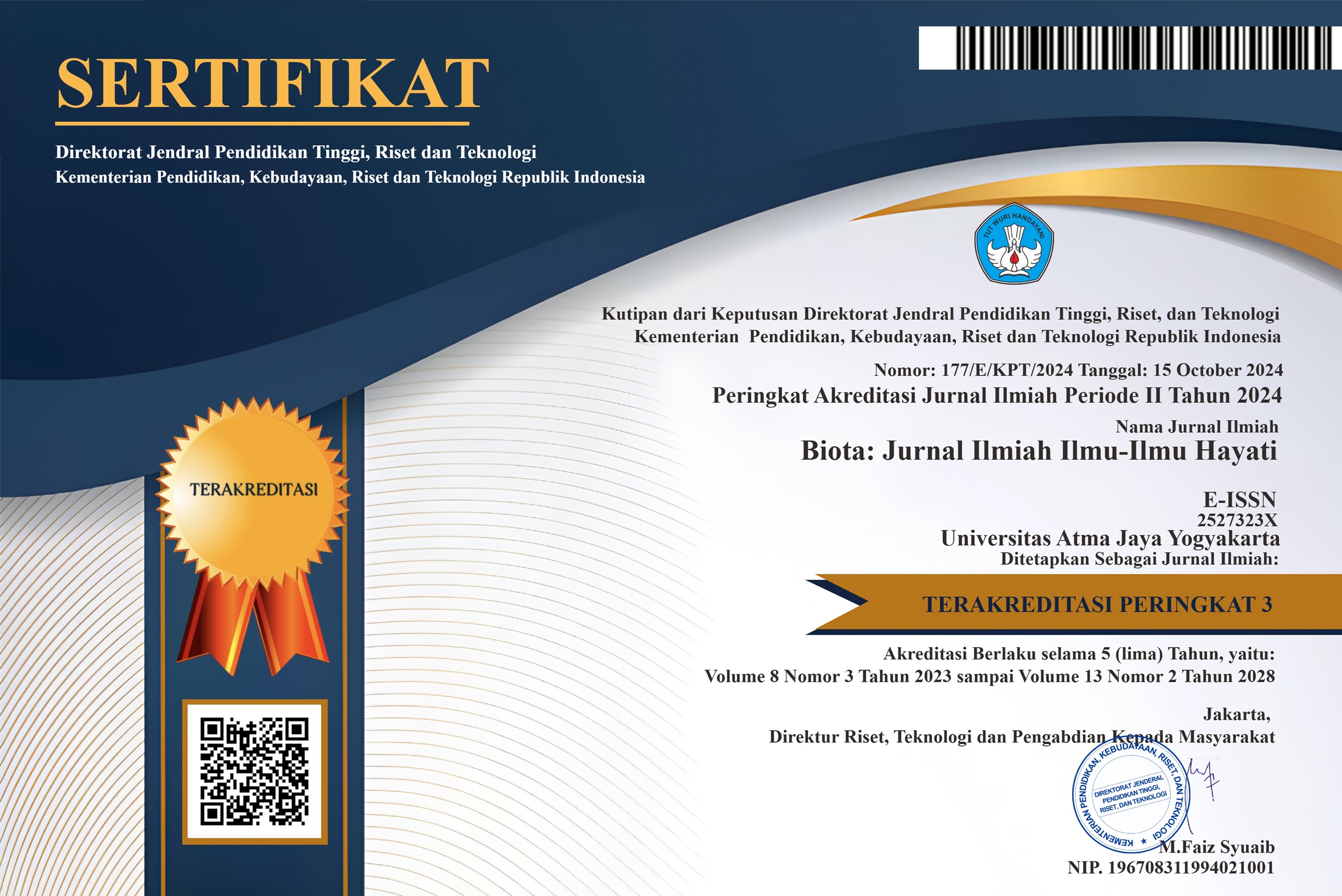Produksi Fitoaleksin pada Tusam (Pinus merkusii Jungh. et de Vriese) sebagai Respon Infeksi Fungi Mikorisa
DOI:
https://doi.org/10.24002/biota.v11i2.2621Keywords:
phytoalexins, tusam, mycorrhizaAbstract
The experiment aimed to detect (1) mycorrhizal infection induced phytoalexins production of the root of tusam and (2) its activity in suppressing a dumping off fungi, Fusarium sp and Rhizoctonia solani. Production of phytoalexins was detected from the extracts of mycorrhizal root of old trees and 4, 6 and 8 week-old seedlings in alcohol using a UV-spectrophotometer. The antifungal activity of phytoalexins was studied by inoculating the pathogenic fungi into mycorrhizal seedlings of tusam. The results showed that the spectra of phytoalexins of extracted mycorrhizal and non-mycorrhizal roots ranged from 203.2 to 204.6 nm. Higher antifungal concentrations of antifungal compound was obtained from the root extracts of old trees and 4 week-old seedlings, indicated by the higher spectrophotometric absorbance (0.315 and 0.324 g-1 root ml-1 ethanol), compared to that extracted from non-mycorrhizal root of the same plant origin. Mycorrhizal roots significantly suppressed the development of Fusarium sp. and Rhizoctonia solani.Downloads
Published
22-10-2019
How to Cite
Widyaningsih, S., Widyastuti, S. M., & Sumardi, S. (2019). Produksi Fitoaleksin pada Tusam (Pinus merkusii Jungh. et de Vriese) sebagai Respon Infeksi Fungi Mikorisa. Biota : Jurnal Ilmiah Ilmu-Ilmu Hayati, 11(2), 80–86. https://doi.org/10.24002/biota.v11i2.2621
Issue
Section
Articles
License
Authors who publish with Biota : Jurnal Ilmiah Ilmu-Ilmu Hayati agree to the following terms:
- Authors retain copyright and grant the Biota : Jurnal Ilmiah Ilmu-Ilmu Hayati right of first publication. Licensed under a Creative Commons Attribution-NonCommercial 4.0 International License that allows others to share the work with an acknowledgment of the work's authorship and initial publication in this journal.
- Authors are able to enter into separate, additional contractual arrangements for the non-exclusive distribution of the journal's published version of the work (e.g., post it to an institutional repository or publish it in a book), with an acknowledgment of its initial publication in Biota : Jurnal Ilmiah Ilmu-Ilmu Hayati, and as long as Author is not used for commercial purposes.












